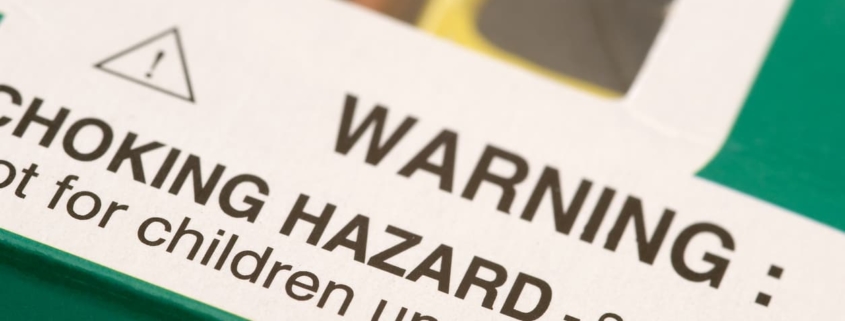If you or a loved one have been injured or suffered damages due to a product you used, you may have a product liability claim.
Every product has the potential to be defective. That’s why there are laws in place to protect consumers. When companies knowingly or unknowingly violate these laws, they put us all at risk.
Lytal, Reiter, Smith, Ivey & Fronrath believe in justice for victims. We have worked with thousands of individuals who have suffered losses due to a defective product. Our Florida product liability lawyers handle their claims, getting them the maximum compensation to ensure the company never makes the same mistake again.
If you have been injured due to a defective product, contact us today to find out if you have a product liability claim.
What is a product liability claim?
Product liability lawsuits provide legal recourse for victims of defective or dangerous products in the United States. Product liability laws vary from personal injury laws, sometimes making it easier for victims to recover damages.
When you file a product liability claim, you are holding the manufacturer or seller of the product accountable for distributing this dangerous item. Manufacturers and sellers are responsible for ensuring that their products meet a reasonable standard of safety in line with their duty of care.
A seller should ask themselves, “Does this product meet the ordinary expectations of the consumer?” If a product has an unexpected danger or defect, then it does not.
Product liability law varies from state to state. Work with a product liability lawyer to know your rights in your state.
Three Most Common Types of Product Liability Claims
There are three primary categories for product liability claims: defectively manufactured products, defectively designed products, and failure to provide adequate warning or instructions for use.
Defectively Manufactured Products
A defectively manufactured product is a product that is flawed due to an error in the production process. The product may normally be safe for use, but due to an error at the factory or the use of the wrong material, the product is now different from all the others on the market. This injury-causing product can hide in plain sight since most individuals will receive the non-defective product.
However, those who do receive the defects can suffer greatly.
If an individual uses the defectively manufactured product and suffers an injury, they may file a product liability complaint against the consumer. The injury must be suffered as a result of defective manufacturing.
For example, you can not file a product liability claim for a faulty scooter if you were injured due to your own poor steering, even if the scooter is faulty.
Examples of defectively manufactured products are:
- A tainted batch of medicine containing a poisonous substance
- Moped with defective tires
- Electronic toy with faulty wiring
- Bicycle with a cracked frame
- Swing set with a weak chain
Defectively Designed Products
Some products have inherently dangerous designs. This is not a manufacturing error, so all of the products in the line will be equally dangerous and defective. Manufacturers may produce the item perfectly, but if the design is inherently flawed, the results will be as well.
You may wonder how defectively designed products ever make it to market. Sometimes they were not tested before being released or were only partially tested. In other cases, the company may have rushed to market without adequate review of the design.
Defectively designed products pose a high risk to consumers. From toys that are choking hazards to airbags that cannot withstand the impact of a collision, products that are not well designed can be life-threatening.
Examples of defectively designed products are:
- Car’s steering system doesn’t work when put in reverse
- Toy is smaller than a child’s esophagus and can cause choking
- Toy can be easily broken by a child into pieces that are a choking risk
- Truck tends to flip when turning corners
- Sunglasses advertised as polarized cannot protect from UV rays
- Hair dryer that electrocutes the user when turned on
Failure to Provide Adequate Warning or Instruction
Every product should come with proper instructions for use. If there are risks to using the product, those warnings should be displayed with adequate markings.
Customers shouldn’t assume that every product they purchase has a risk of harming them. It is the duty of the manufacturer and seller to ensure that these products are properly labeled.
Examples of this type of product liability claim are:
- Children’s pajamas that are not labeled as highly flammable
- Medication that does not include a warning of side effects when mixed with another common medication
- Corrosive paint sold without instructions for safe handling
- Energy drink without a warning not to mix with alcoholic drinks due to a dangerous side effect
- A health food without a warning that it is not safe for pregnant women to consume
Contact a Product Liability Lawyer at Lytal, Reiter, Smith, Ivey & Fronrath
Thousands of United States citizens are injured annually due to defective products. They may not know that they can file a type of product liability claim or who to file their claim against. With the help of a product liability lawyer, these victims can get the justice they deserve.
Lytal, Reiter, Smith, Ivey & Fronrath fight for victims. We work diligently to get you the maximum damages you need to overcome your injuries and ensure that the responsible party is held liable for their actions.
Together, we can work toward a safer society where consumers don’t have to fear the products they use.




